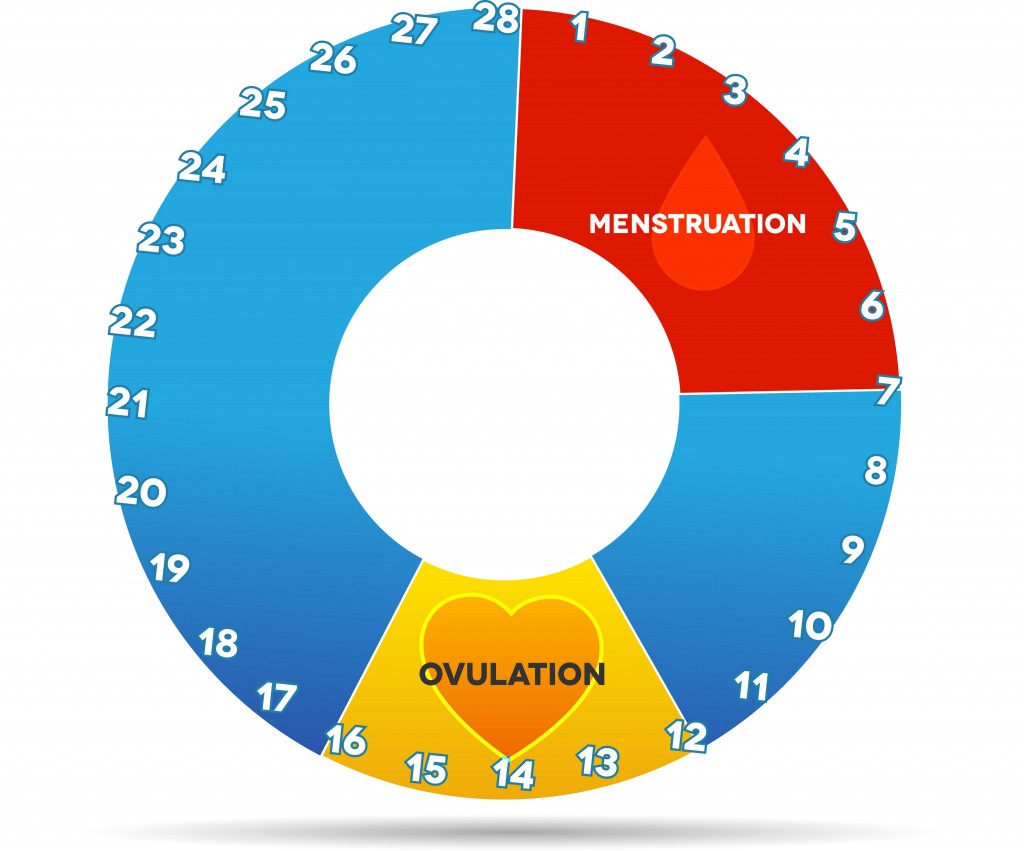Did you know that you have a 20 percent chance of getting pregnant if you engage in baby-making sex around the time you ovulate?
If you want to conceive, then you’ll certainly want to keep that in mind. The question is, how do you know when you’re ovulating, especially if your periods are irregular? Obviously, there are a couple of symptoms that can get you on the right track. Pay attention to them, and you’ll identify the prime moment for baby-making sex.
When Do You Ovulate?
Let’s start with the beginning – when does a woman ovulate?
Ovulation takes place around the middle of your menstrual cycle, about 14 to 16 days before your next scheduled period. If you have a 30-day menstrual cycle, then you’ll ovulate between days 14-16; if you have a 32-menstrual cycle, you’ll ovulate between days 16-18.
When you ovulate, one of your ovaries releases an egg (ovum), which travels down the fallopian tubes to the uterus. The fertilization occurs in the fallopian tubes. If fertilization doesn’t occur, the egg dies in the fallopian tubes, about 12 to 24 hours after its release. If it does occur, the fertilized egg continues its journey through the fallopian tubes and to the uterus, embedding to the endometrium and starting to gradually mature into a fetus – your baby.
Symptoms of Ovulation
Ovulation is often accompanied by a number of symptoms that are fairly easy to identify. We’ve listed them below:
1. Cramps
Cramps during ovulation are extremely normal. Painful ovulation, known as Mittelschmerz, occurs when a follicle (a tiny fluid-filled, blood-rich sac that develops on the ovary) ruptures, releasing the egg. The pain will be on one side of your abdomen, depending on the ovary that releases the egg. Although it’s not severe, the discomfort can feel like a pinch and last for just a few minutes, or be more intense and last for hours.
Most women don’t experience any stomach cramps when they ovulate; others feel bad cramps, as well as abdominal discomfort, a few weeks before their next scheduled period. If you have severe cramping, you may want to check with your ob-gyn to see if it’s something else causing it.
2. Body Temperature
Another common symptom of ovulation is the increase in body temperature. Your basal body temperature changes based on the fluctuations in hormone levels. During the first half of your menstrual cycle, the levels of estrogen are high. Once ovulation has occurred, estrogen levels decrease while progesterone levels increase, a sign that your uterus is ready for the embedment of a fertilized, implantable egg.
Progesterone will increase your body temperature by half a degree and up to one degree. The bottom line? Your basal body temperature will reach its lowest point right before you ovulate, as estrogen levels still dominate, and will rise immediately and dramatically, by at least half a degree, once ovulation occurs.
The easiest way to measure your basal body temperature is using a basic thermometer. You’ll want to chart your BBT for a few months to get an idea of how your body reacts when you ovulate. This will help you identify the prime moment to hop into bed and engage in baby-making sex.
3. Egg White Cervical Mucus
In addition to cramping during ovulation, your normal cervical mucus, which is typically white and slightly thick, will become clear and slippery, with a consistency that resembles egg whites.
To further explain why this happens, you need to understand how your cervix works. During the beginning of your menstrual cycle, your cervix (the passage between your vagina and uterus that stretches during birth) is low, hard and closed. As you progress towards your most fertile window – ovulation –, your cervix starts to soften, opening just a little, but enough to allow viable sperm cells to travel and unite with the egg.
The result of this softening is egg-white-like vaginal discharge. It is thin, slippery, clear and has a consistency that’s similar to uncooked egg whites. Moreover, it can stretch up to 1-2 inches between your fingers without breaking in the middle. The amount of cervical mucus is more copious when you ovulate.
If you aren’t quite familiar with how your cervical mucus looks throughout your menstrual cycle, then it’s just the right time to become. Chart the consistency and color of the mucus, and see when it’s the most slippery and clear. The best way to do this is to insert one or two fingers in your vagina, and see how the mucus looks like.
4. Bloating
Do your clothes feel a little tighter than usually? It could be due to bloating, a common ovulation symptom that happens to most women. The bloating is similar to your PMS, and may vary from very mild to pretty intense. If bloating and cramps during ovulation make you uncomfortable, consider talking to your ob-gyn about some form of pain relief.
5. Breast Tenderness
Breast tenderness is a common ovulation symptom that results due to progesterone levels rising right when the egg is released. Your breasts may feel tender, like they are before and during your period, and your nipples may be particularly sensitive.
6. Spotting
Spotting is light bleeding that occurs at any time during your menstrual cycle except your period, and most commonly when the follicle bursts and the egg is released.
Spotting may look like your period, but it will be much lighter, in the form of blood spots rather that continuous blood flow, and it will last anywhere from a few minutes to a few hours. If it’s accompanied by severe cramping, a rise in your basal body temperature, and an increase in your normal cervical mucus, then you’re most definitely ovulating.
If your periods are irregular, it means that you’re ovulating irregularly, so paying close attention to the above-mentioned symptoms will be a good way to determine when the egg has been released. If cramping during ovulation is particularly bad, you may want to investigate the cause, as it may sometimes indicate the presence of a more serious health condition.




